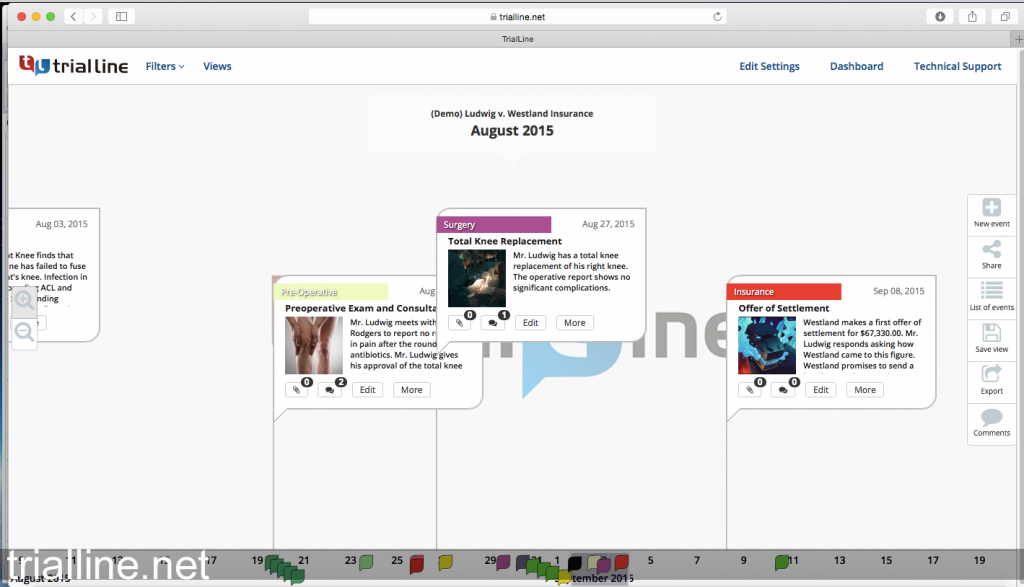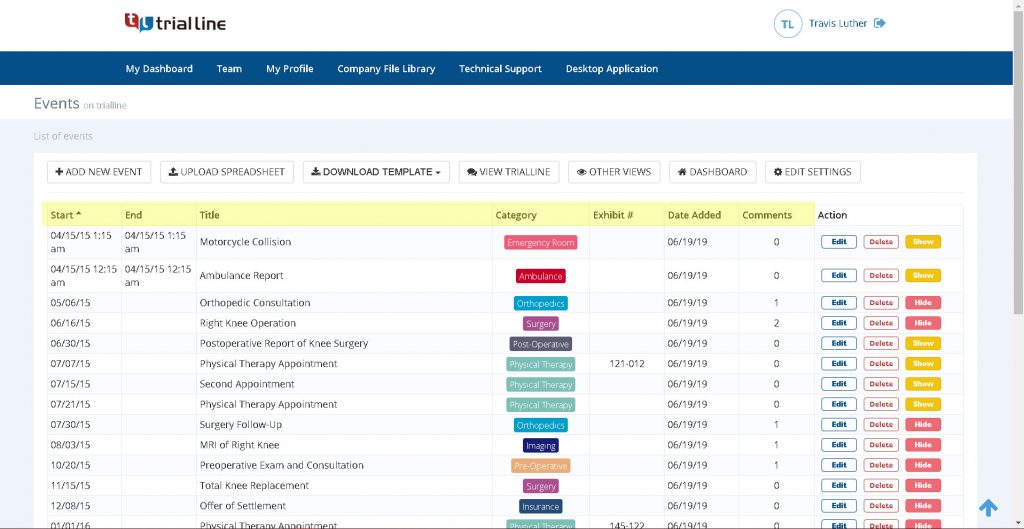If you have a busy law firm, then you know that the time-crunched attorneys at that firm would be thrilled to be able to spend less time on case preparation without negatively effecting their ability to get good outcomes for their cases. Perhaps you and your attorneys use some form of manually prepared case timeline. While this type of legal timeline is certainly better than nothing, it can take a considerable amount of effort to put together, and, in the end, is little more than a Power Point presentation. But there are more modern, and easier to use case timeline software options available on the market that you need to know about.
What if your firm could create trial timelines that are intuitive, organized and collaborative? What if that case timeline could be fast and simple to produce and use, and easy to present to jurors—who will absolutely love the visual conceptualization of your case? If you are looking for timeline software that will make your case preparation a breeze, and will result in a compelling visual presentation (which will help all those involved better understand the case), then look no more. With TrialLine’s innovative case timeline software, you can enter the following information with ease:
- The people and entities involved in your case—your contacts—can easily be entered into your case timeline. These people and entities can include witnesses, attorneys, experts, your client, or anyone who could be involved in any fact of your case.
- The issues involved in the case including the specific defenses and claims, but also including anything that can help you group together the facts of the case.
- The facts of the case are the essential building blocks of your timeline. Although facts may have dates, some may not. With TrialLine, you can enter a date but it isn’t required. You also may need to breakout a single fact into several separate facts in your litigation timeline, or link the facts to sources, contacts or issues. When a fact is linked to information, it gains context, which makes that fact’s role in the overall case as a whole, much clearer.
- The documents you deal with are your sources. These sources are evidence, and could come in the form of a photo, a deposition transcript, an e-mail, a word processing document, a medical bill, or virtually any other type of digital file on your computer. Your sources can also be set up so that a specific witness is the source, rather than a document. The idea behind treating your sources in this manner is that it gives you a roadmap for your case that clearly details the evidence necessary to prove each fact, while at the same time providing you with as much flexibility as possible.
- Finally, you will connect your sources and facts with citations; if you are using a specific deposition to prove a number of facts, then each individual fact will be supported by a corresponding citation—a certain page and line number in the corresponding deposition.
Consider TrialLine by Law Father
 TrialLine is a cloud-based mediation and trial presentation timeline tool for law firms that want to create efficient and easy to use legal chronologies for their cases. With TrialLine, you can easily organize and share your case events and related documents with staff, experts, juries, opposing counsel, and other attorneys. It is completely web-based and can be accessed and shared through any internet connection on any device. Sign up now to try it FREE FOR 30 DAYS!
TrialLine is a cloud-based mediation and trial presentation timeline tool for law firms that want to create efficient and easy to use legal chronologies for their cases. With TrialLine, you can easily organize and share your case events and related documents with staff, experts, juries, opposing counsel, and other attorneys. It is completely web-based and can be accessed and shared through any internet connection on any device. Sign up now to try it FREE FOR 30 DAYS!
Related Reading: Better Outcomes with TrialLine Legal Case Timelines






